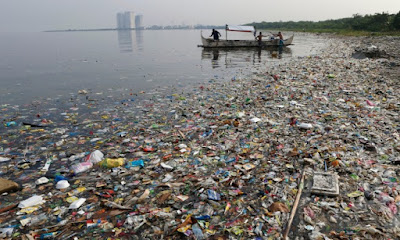Life in Plastic
How to Reduce Exposure to Microplastics
Firstly, what exactly are microplastics?
Microplastics are small fragments of plastic which are less than 5mm long (or about the size of a sesame seed). They come from a variety of sources; some plastics are manufactured to be this small and are used in exfoliating products; and other larger plastic products degrade over time, shedding plastic debris along the way.
Microplastics have also been detected everywhere, from the bottom of the very deepest ocean trench, to the peak of Mount Everest. They can be found in common table salt , water and even in dust particles in the air .
How are they harmful?
We know that microplastics can have toxic effects on marine life. This includes stunting growth, reducing food intake and causing abnormal behaviour. However, we don’t yet fully understand how these negative consequences translate when microplastics interact with the human body. Worryingly, in March 2022, a study conducted by scientists from Vrije Universiteit Amsterdam in the Netherlands has discovered microplastics in human blood for the first time.
The scientists analysed blood samples from 22 healthy adults and detected different types of plastic in 17 individuals. The types of plastics found in the samples varied from PET (commonly used in drinks bottles), to polyethylene (the plastic that is used to make plastic carrier bags) and even polystyrene (used for packaging). Some of the blood samples even contained two or three different types of plastic.
Professor Dick Vethaak, an ecotoxicologist who worked on the project, stated that the reason for the range of micro plastics found may be due to short-term exposure before the samples were taken, such as drinking from a plastic water bottle, or wearing a plastic face mask.
Scientists, MPs and over 80 NGO groups including Greenpeace, WWF and Friends of the Earth, are asking the UK government to allocate £15m to research the health impacts of plastic on human health so that we can better understand the impact this is having on our bodies.
How can you reduce exposure?
It is thought that the tiny specks of plastic enter our bodies through ingestion (by eating or drinking things that contain microplastics) or through inhalation (by breathings in specks that are in the air). If you’re worried about the potential impacts of microplastics, there are some simple things that you can do to limit your exposure such as:
· Avoid plastic tea bags
· Avoid microwaving food in plastic containers
· Cut out plastic-lined takeaway coffee cups
· Dust and vacuum regularly
· Don’t rely on bottled water and consider buying a water filter
EMERGE provides environmental education and advice on resource management, waste composition and sustainable procurement issues. Our business services include everything from recycling collections to confidential document shredding.
.png)

Comments
Post a Comment